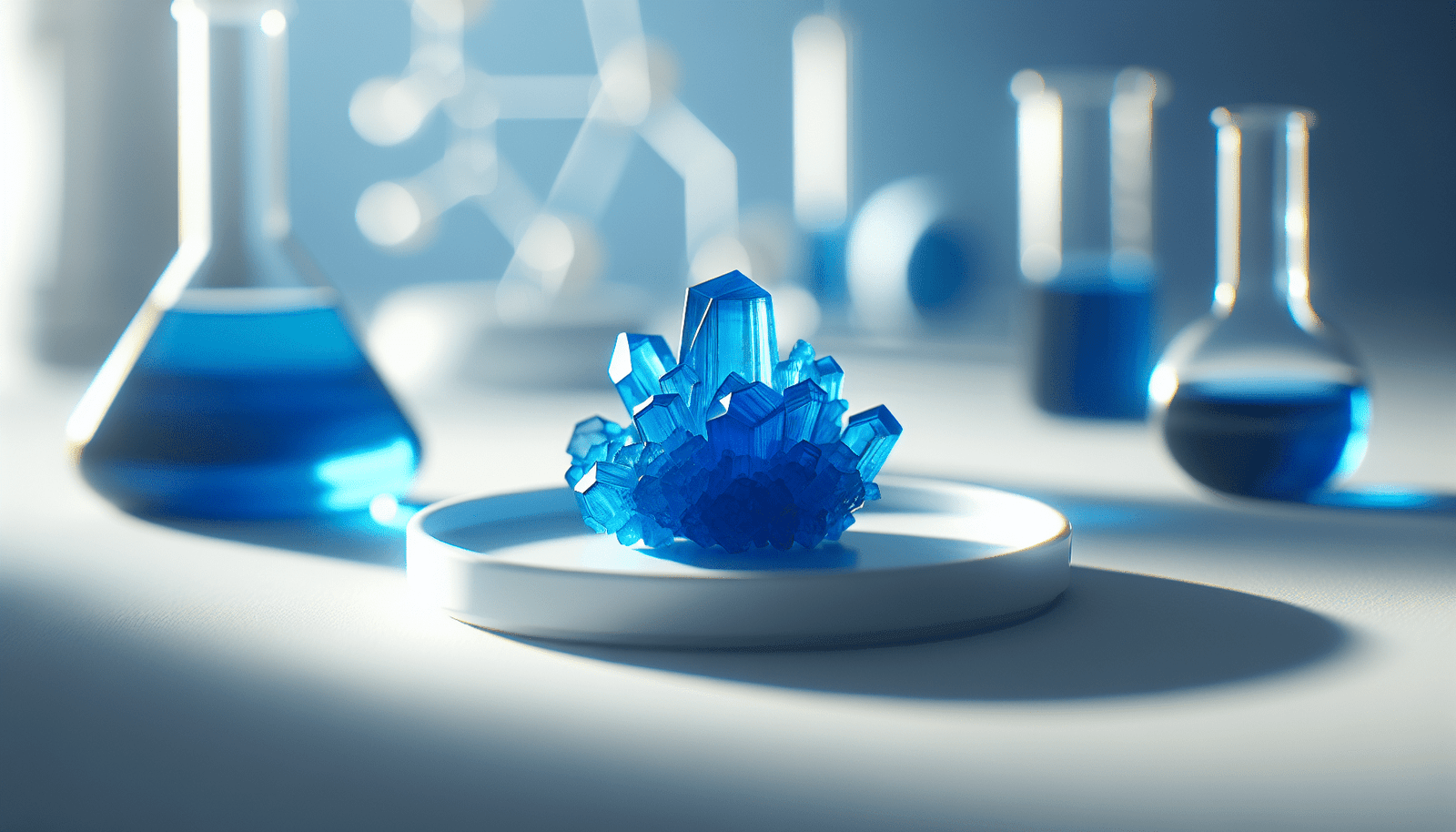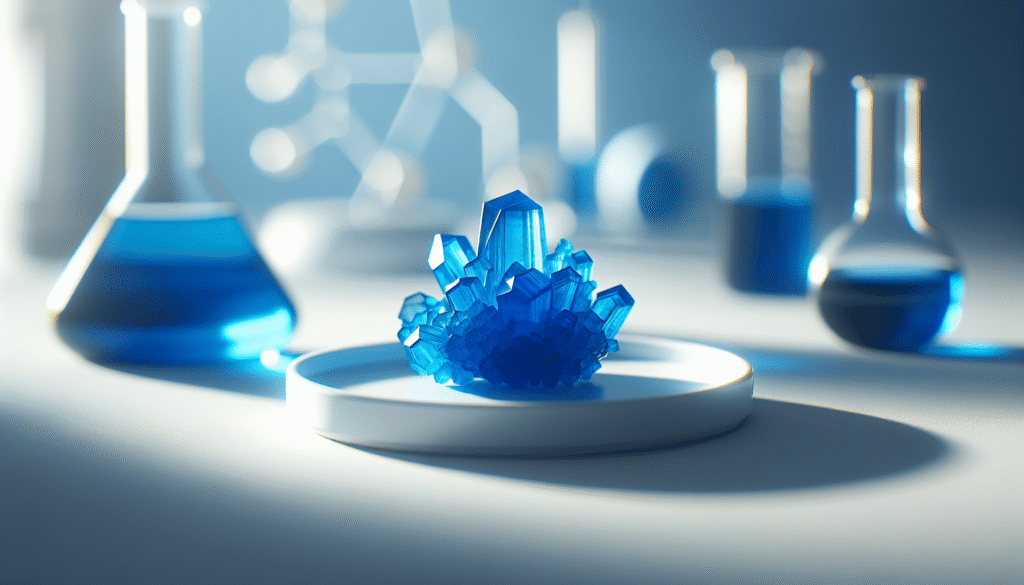
Have you ever wondered how certain compounds can alter biological processes within the body? Methylene Blue is one such compound that has garnered attention for its unique properties and applications in medicine. This article aims to provide a comprehensive understanding of how Methylene Blue works, exploring its mechanisms, benefits, and potential uses.

Overview of Methylene Blue
Methylene Blue is a synthetic dye that has been in use since the late 19th century. Initially employed in the textile industry, it was soon discovered to have medicinal properties. Today, Methylene Blue is utilized in various medical fields, ranging from the treatment of methemoglobinemia to potential applications in neurodegenerative diseases.
Chemical Structure
Understanding the chemical structure of Methylene Blue is crucial to grasping how it functions. The compound is an aromatic heterocyclic organic compound with the chemical formula C16H18ClN3S. This structure allows it to interact with various biological systems.
Historical Context
Methylene Blue’s journey began in 1876, when it was first synthesized by Heinrich Caro. Its first applications were as a stain in microbiology. Over time, medical professionals began to recognize its therapeutic potential, leading to its inclusion in treatment protocols for various medical conditions.
Mechanisms of Action
The efficacy of Methylene Blue lies in its multifaceted mechanisms of action. Understanding these mechanisms can illuminate why it is used in different therapeutic contexts.
Redox Properties
One primary mechanism by which Methylene Blue operates is through its redox properties. Redox, short for reduction-oxidation, involves electron transfer processes between molecules. Methylene Blue can accept and donate electrons, thereby facilitating electron transport in biological systems.
- Electron Transport Chain: Methylene Blue acts as an alternative electron carrier in the mitochondrial electron transport chain. This is particularly beneficial in conditions where energy production is impaired.
Effects on Methemoglobinemia
Methemoglobinemia is a condition characterized by an increased level of methemoglobin in the blood, preventing oxygen transport. Methylene Blue helps convert methemoglobin back into hemoglobin, thereby restoring the blood’s ability to transport oxygen effectively.
- Mechanism of Action: Methylene Blue functions as a reducing agent, donating electrons to methemoglobin. This conversion is essential for treating symptoms of hypoxia and other related complications.
Antimicrobial Properties
In addition to its effects on methemoglobinemia, Methylene Blue exhibits antimicrobial properties. It interacts with bacterial cells, disrupting their function and ultimately leading to cell death.
- Mechanism: Methylene Blue can produce reactive oxygen species upon exposure to light, a process known as photodynamic therapy. This characteristic is especially useful in treating certain infections.
Therapeutic Applications
The diverse mechanisms of action of Methylene Blue open the door for numerous therapeutic applications. Here are some prominent uses:
Treatment of Methemoglobinemia
As previously mentioned, Methylene Blue is a first-line treatment for methemoglobinemia. For patients suffering from this condition, timely administration can be life-saving.
- Dosage and Administration: Typically, a dosage of 1-2 mg/kg body weight is used intravenously. It’s crucial to monitor patients closely for both efficacy and potential side effects.
Cognitive Enhancement
There is growing interest in Methylene Blue’s potential cognitive-enhancing effects. Preliminary research suggests it may improve memory and cognitive processing speed, particularly in older adults.
- Mechanism: The compound enhances mitochondrial function and energy metabolism in the brain, which may be associated with improved cognitive function.
Neuroprotection
Methylene Blue has been studied for its neuroprotective properties, especially in the context of neurodegenerative diseases like Alzheimer’s and Parkinson’s.
- Antioxidant Effects: It helps mitigate oxidative stress in neuronal cells, which can lead to neurodegeneration.
Treatment of Urinary Tract Infections (UTIs)
Methylene Blue’s antimicrobial properties make it a candidate for treating urinary tract infections. Research has indicated its effectiveness, particularly as an adjunct therapy.
- Concentration in Urine: After administration, Methylene Blue is excreted via the urinary tract, where its concentrated presence can combat bacterial infections.
Cancer Research
While still in research phases, Methylene Blue is being assessed for its potential treatment applications in oncology. Its ability to induce apoptosis, or programmed cell death, in cancerous cells is under investigation.
- Promising Findings: Certain studies indicate that Methylene Blue may selectively target cancer cells without affecting normal cells, offering a potential pathway for reducing side effects in cancer therapies.
Safety and Side Effects
While Methylene Blue has various therapeutic uses, it’s essential to consider its safety profile and any potential side effects.
Common Side Effects
Most patients tolerate Methylene Blue well; however, some might experience side effects, including:
| Side Effect | Description |
|---|---|
| Urine Discoloration | Patients may notice a blue or greenish tinge to urine. |
| Nausea and Vomiting | Some individuals may experience gastrointestinal disturbances. |
| Headaches | Mild headaches can occur but are generally transient. |
Allergic Reactions
Though rare, allergic reactions may occur, characterized by symptoms such as rash, itching, or difficulty breathing. It’s crucial to monitor patients closely for these signs.
Drug Interactions
Methylene Blue can interact with several medications, including:
| Medication | Interaction |
|---|---|
| SSRIs | May increase the risk of serotonin syndrome. |
| MAO Inhibitors | Potential for hypertensive crisis. |
| Dapsone | Risk of hemolytic anemia. |
It is advisable to review a patient’s medication list thoroughly before initiating Methylene Blue treatment.

Current Research and Future Directions
Ongoing research continues to unveil the potential of Methylene Blue across a range of medical applications. Scientists are exploring new therapeutic avenues that could enhance patient outcomes.
Mental Health
Recent studies have begun to evaluate Methylene Blue for potential applications in treating mood disorders such as depression and anxiety. The compound’s neuroprotective and energizing properties may contribute to improved mental health.
Aging and Longevity
Research is also focused on the effects of Methylene Blue on aging. Because it enhances mitochondrial function and reduces oxidative stress, it could play a role in promoting longevity and healthy aging.
Conclusion
Methylene Blue stands as a remarkable example of a compound with diverse applications in medicine. Its mechanisms of action are rooted in its unique chemical properties, allowing it to affect various biological systems significantly.
This compound has proven beneficial in treating conditions such as methemoglobinemia while also showing promise for cognitive enhancement, neuroprotection, and antimicrobial applications. While generally considered safe, healthcare practitioners must remain vigilant regarding potential side effects and drug interactions.
As research progresses, Methylene Blue may unlock further therapeutic potentials, cementing its role as a versatile tool in modern medicine. Understanding how it works informs not just its history, but its future—a future that holds promise for patients and practitioners alike.